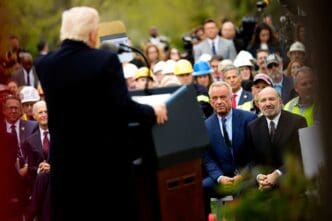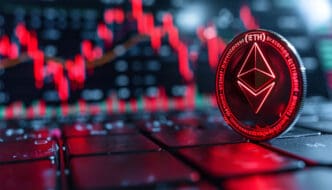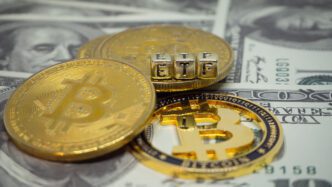U.S. stocks showed mixed performance on Thursday morning following President Donald Trump’s call for the dismissal of Federal Reserve Chair Jerome Powell. The president has repeatedly criticized Powell for not reducing interest rates swiftly enough, intensifying a long-standing dispute between the two. The Dow Jones Industrial Average plummeted 500 points, or 1.26%, while the S&P 500 saw a modest rise of 0.4%, and the tech-focused Nasdaq Composite increased by 0.5%. The decline in Dow futures was pronounced as Trump took to social media to express his dissatisfaction with Powell’s actions.
UnitedHealth Group significantly impacted the Dow’s performance, falling 18% after it revised its profit forecast downward for the year. On social media, Trump criticized Powell by stating, “Jerome Powell of the Fed, who is always TOO LATE AND WRONG, yesterday issued a report which was another, and typical, complete ‘mess!’ Powell’s termination cannot come fast enough!”
At an economic event in Chicago on Wednesday, Powell highlighted the unprecedented nature of Trump’s tariffs, warning that they could fuel inflation and hinder economic growth, thus complicating the Federal Reserve’s responsibilities. This statement led to a rapid sell-off, with the Dow closing 700 points lower at 1.73%, the S&P 500 falling 2.24%, and the Nasdaq Composite decreasing by 3.07%.
Powell noted, “We may find ourselves in the challenging scenario in which our dual-mandate goals are in tension.” This sentiment is echoed by companies addressing the challenges of planning amid uncertainty in their first-quarter earnings calls. United Airlines, for instance, provided two different forecasts: one for a recession and another for a stable scenario.
Solita Marcelli, Chief Investment Officer for the Americas at UBS Global Wealth Management, commented, “Recent developments are a reminder that market swings are likely until there is greater certainty over the outlook for tariffs.” Stocks were already under pressure from Nvidia’s announcement of a $5.5 billion hit due to new U.S. export restrictions on its H20 chips to China.
Dan Ives, an analyst at Wedbush Securities, remarked on the rising concerns since Trump initiated his “reciprocal” tariffs plan on April 2. “This week were the first shots fired in the trade war in the tech world as the White House has essentially blocked Nvidia from selling its key H20 chips to China,” Ives noted. Despite overnight gains during a brief period of calm, the markets remain volatile.
Trump also took to social media to discuss trade talks, mentioning a “very productive call” with Mexico’s President Claudia Sheinbaum and meetings with Japanese trade representatives. The yield on the 10-year Treasury note traded around 4.29%, up slightly from Wednesday, while the U.S. dollar index made slight gains after touching a three-year low. In Europe, the European Central Bank cut its main interest rate, reflecting concern over the potential economic impact of Trump’s tariffs, with the STOXX 600 index dropping 0.37% in afternoon trading. Trading in the U.S. will be closed on Friday in observance of Good Friday.
The Evolving Landscape
For everyday investors and consumers, the ongoing volatility in financial markets underscores the broader economic uncertainties shaped by geopolitical tensions, particularly those involving tariffs and international trade disputes. With the stock market experiencing significant fluctuations, individuals may question the stability of their investments and savings.
The tariffs and resulting economic measures could potentially lead to increased prices on consumer goods, affecting household budgets. Furthermore, industries reliant on international trade, such as technology and manufacturing, might face operational challenges, potentially impacting employment and local economies.
As the situation evolves, consumers and investors should remain informed and vigilant, understanding that these developments could influence their financial decisions and broader economic circumstances. The interaction between government policies and market responses will continue to shape the financial landscape, making it crucial to stay updated on ongoing news and expert analyses.







